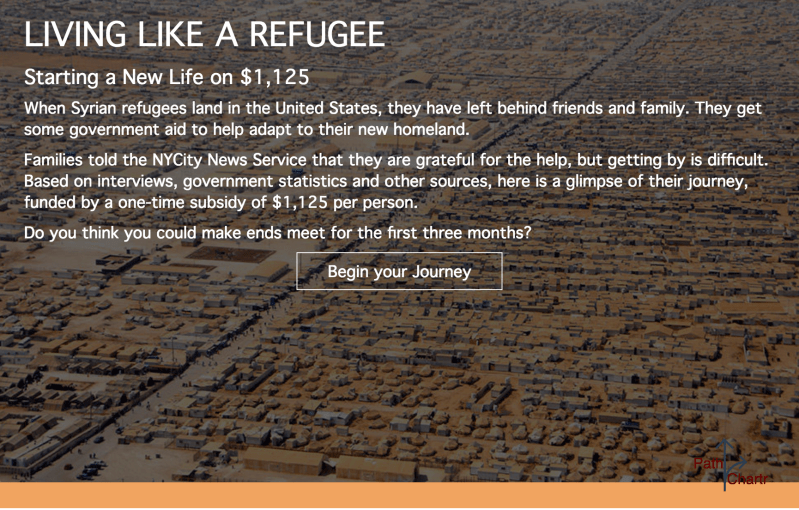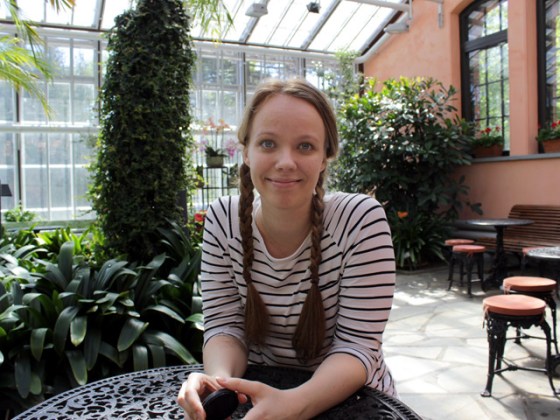“How would this affect you?”
“What would you do if you were in this person’s shoes?”
These are the type of questions journalists who create news interactives want audiences to answer. They design sequences of questions or prompts that ask audiences to make virtual choices they may never have to in real life.
“What we’re trying to do is trying to make it personal,” Jere Hester, Director of News and Products and Projects at the CUNY Graduate School of Journalism, said. “This issue and all these numbers…where do I fit into them?”
Hester and CUNY J-School Director of Interactive Journalism Sandeep Junnarkar worked with a team of students and New York Times investigative reporter Andrew W. Lehren to look at how money for Syrian refugees was being used. After a semester writing three pieces on the topic, Hester said they asked themselves how to actually get people to experience what the Syrian refugees are going through.
The result is a Q&A interactive titled “Living Like a Refugee.” Readers are guided through prompts such as “How many members in your family, including yourself?”, “Do you have family already in the States?” and “Do you speak English?” Junnarkar explained that “Living Like a Refugee” was not based on any one person’s story, but from several interviews, facts and figures that the team found so that the final product represented the refugee experience.
“We were very careful in terms of…keeping these to decisions that people had told us that they needed to make,” Junnarkar said, “as well as getting some in there that were fairly logical things that we know in terms of housing and transportation and things you would expect.”
Kristen Lee, director of digital editorial operations at the New York Daily News, had a different approach to interactive news. Lee contributed to an interactive map titled “How Safe is Your Child’s Day Care,” which allows users to look up specific day care centers to see if they violated any safety regulations. She explained that because day care centers could either be registered with the city or the state, there was no clear-cut path for parents to find the center’s safety records.
“For the first time, the parents have a kind of one-stop shop to be able to go in and easily find safety information about their child’s daycare,” Lee said.
News interactives like these have had an impact. Lee said the primary goal of “How Safe is Your Child’s Day Care” was to nudge city and state agencies to provide this kind of service themselves. She believes progress has been made, but said there’s much left to do.
“I think that we at least made the government see that there is a need for it and that it should happen,” Lee said. “So we are going to update it…because we want to keep prodding them.”
As for “Living Like a Refugee,” Hester said they received feedback from a number of people including journalists, friends and the people they wrote about who said that the interactive truly summed up what they were going through. They received good feedback from the federal government as well, he added.
“The gist of the investigative part of the story was maybe they weren’t making the greatest decision in terms of the nonprofits they’re picking,” Hester said. “But I was very happy and surprised they played ball with us on this one.”






